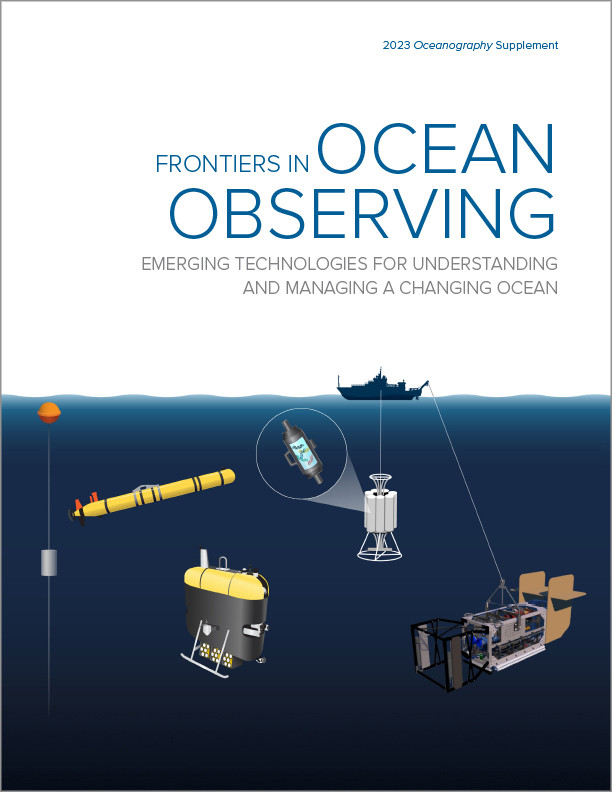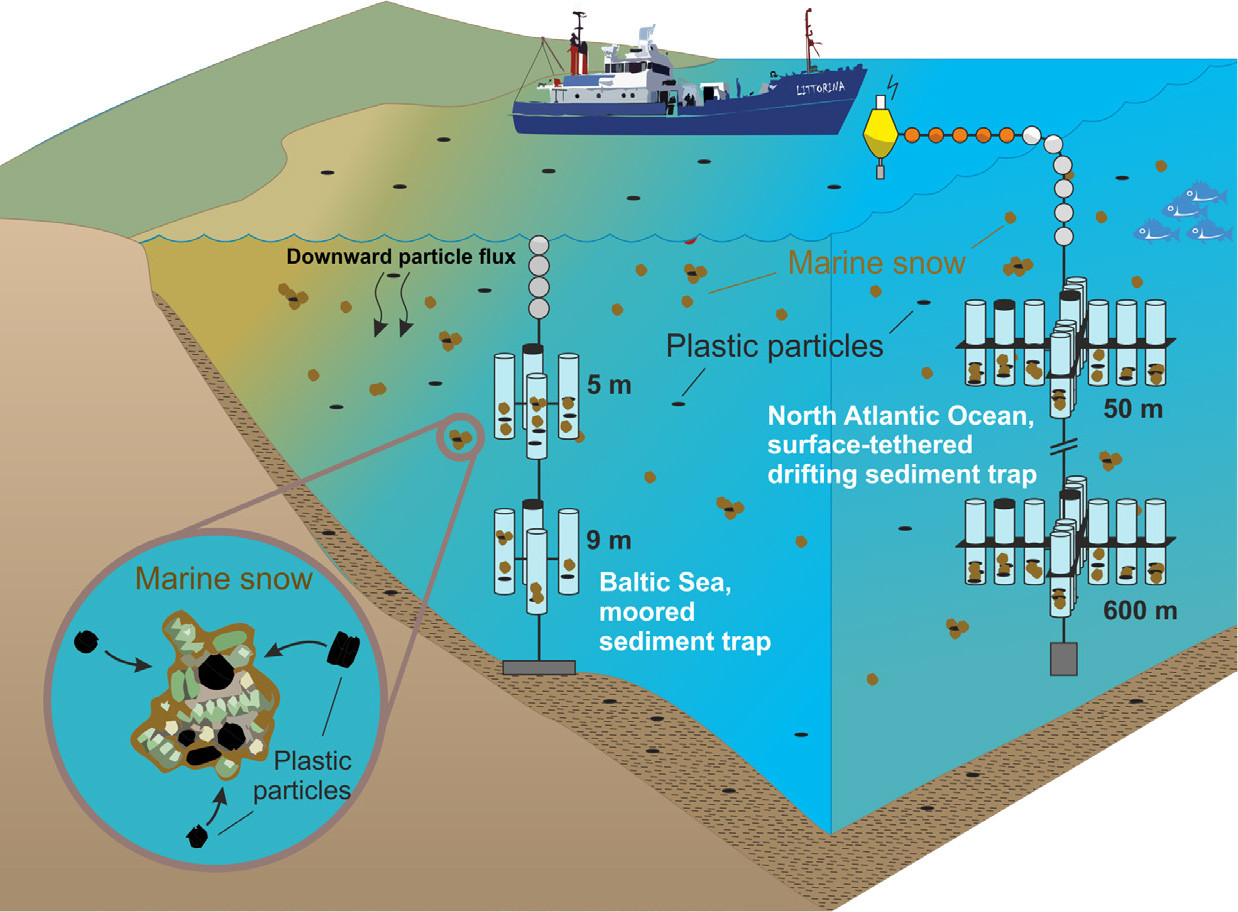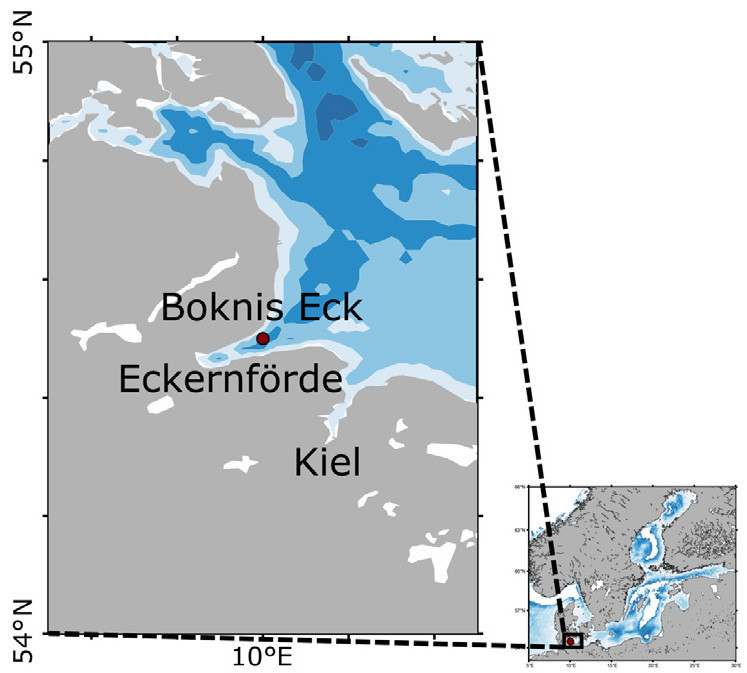Full Text
Particles afloat in the ocean are important components of marine element cycles. Most of this particulate matter is suspended in the sunlit surface layer and is mainly composed of microscopic living and dead organisms and fecal pellets. Aggregation of small, suspended particles into large, rapidly sinking aggregates can transport surface-derived material to the deep ocean and the seafloor, contributing to the so-called biological pump. The comprehensive analysis of these sinking particles has increased our understanding of important biogeochemical ocean processes, such as the relationship between the rate of primary production and downward flux of particulate organic matter, the biological control of the removal of abiogenic particles from the surface ocean, and seasonal or interannual variations in downward particle fluxes. Sediment traps have been widely used since the late 1970s to capture the downward flux of particles for study (e.g., Staresinic et al., 1978; Knauer et al., 1979).
While helping us to understand how fast “natural” elements such as carbon and nutrients (i.e., nitrogen, phosphorus, and iron) are exported from the surface to the deep ocean on various timescales, sediment traps can also provide important information on fluxes and removal rates of anthropogenic pollutants such as plastic particles. Although plastic is very resistant to (bio-)degradation and can remain in the marine environment for hundreds of years, physical, chemical, and biological stressors break down larger plastic debris into micro- and nanoplastics that threaten marine life.
The fate of marine plastic is little understood. Flux estimates of plastic input into the ocean and actual concentrations observed suggest an unidentified sink. The interaction of plastic with sinking biological material in the ocean might explain a large fraction of the missing plastic mass inventory (van Sebille et al., 2020).
Trapping Sinking Plastic Particles
Plastic is transported both horizontally and vertically in the ocean. To look for the missing plastic, we deployed multi-level, surface-tethered drifting sediment traps in the summer of 2019 during a cruise to the North Atlantic Gyre, one of the hotspots of plastic debris accumulation (Galgani et al., 2022; Figure 1). Surface-tethered sediment traps can drift along the paths of ocean currents and enable identification of areas of high plastic concentration.
|
|
The trap setup consisted of eight PVC cross-shaped arrays hooked to a main line to collect sinking material at depths of 50 m, 100 m, 150 m, 200 m, 300 m, 400 m, 500 m, and 600 m. Each array contained 12 tubular Particle Interceptor Traps (PITs; Figure 2), with an aspect ratio of 7.5 and a collection area of 0.0038 m2. The main line carried a ground weight and various floats as well as a yellow buoy at the top with two GPS beacons (Argos and Iridium), and a flashing light to allow continuous tracking and recovery of the traps at the end of the drift period (Figure 2).
|
|
PIT preparation and sample recovery followed Engel et al. (2017). The traps were left to drift in the water for four to five days to ensure collection of sufficient material for later analysis. After recovery, the collected material was pre-screened (500 µm) to remove swimmers and visible plastic particles for later identification, and the remaining material was then split into aliquots for different analyses.
More recently, we deployed a similar setup in the southwestern Baltic Sea as part of the Boknis Eck Marine Time Series Station in Eckernförde Bay (Germany) (Figure 3; for more information, see https://www.bokniseck.de/). The sediment trap array is moored in a restricted area close to the time-series station, where the water depth is about 17 m (Figure 1). Sinking material is collected at about 5 m and 9 m depth. The whole system is moored with a ~600 kg weight. Each array contains four PITs with one lid-sealed PIT per array providing a blank. The sediment traps are exchanged every one to two months. Surface water samples are obtained by filtering ~2 L of the brine solution onto 300 µm, 125 µm, 50 µm, and 1 mm sieves.
|
|
In contrast to the surface-tethered drifting array, which permits estimations of downward particle fluxes in open waters, the year-round coastal array serves as an in situ particle collector that allows us to study how plastic particles correlate with organic particle abundance over seasonal cycles. This long-term monitoring strategy will enable us to track changes in the marine ecosystem and in plastic concentrations, and will potentially provide information on plastic interaction with biogeochemical and physical processes that drive long-term ecosystem changes.
Blanks and Contamination Control
Sediment trap equipment, including that used for our studies, is usually made from plastics. Therefore, each array (for every depth and every deployment) contains at least one or two PITs serving as blank controls. These PITs are filled with filtered brine and filtered seawater but sealed immediately before deployment, allowing us to account for any potential source of contamination from the system itself at any step of the process. The blanks are successively pooled and treated like the regular samples. As an additional measure, we take particular care to work in 100% cotton clothes while preparing the setup and handling the samples, and we use all glass materials when possible. Moreover, a laboratory blank control is always run to account for possible contamination in the lab during the analysis.
Sediment traps are a reliable method for studying plastic fluxes and their interactions with biogenic components. Although this approach requires specific platforms for deployment, planned ship time, and ship crews for deployment and recovery, because sediment traps are widely used tools in oceanographic research, they offer a combined opportunity to obtain more data on plastic fluxes and on particle distributions.




